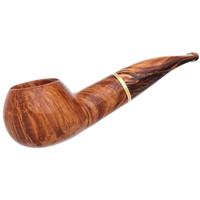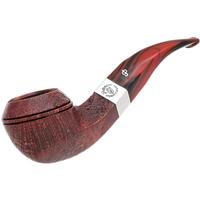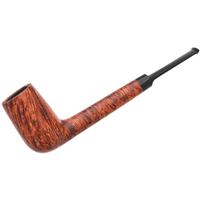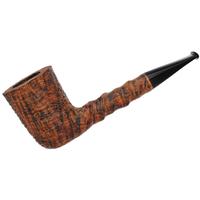How to Clean the outside of my pipe bowl?
- Thread starter papajoe
- Start date
You are using an out of date browser. It may not display this or other websites correctly.
You should upgrade or use an alternative browser.
You should upgrade or use an alternative browser.
- Status
- Not open for further replies.
Alcohol is usually advised against for cleaning the exterior of your pipe, unless you want to re-stain it afterwards. For light surface stickiness I would use a damp cotton cloth. Steve Laug, an accomplished pipe restorer that runs the website Reborn Pipes uses Murphy's Oil Soap for cleaning more stubborn grime. Rebornpipes.com is a great resource for learning all sorts of good info about the care and upkeep uf your pipes.
Here's where I can learn something. I've been using Everclear to clean the outside of my pipes, even scrubbing with a toothbrush soaked in it for rusticated surfaces. It does remove the wax along with the dirt but I've never noticed any stain coming off on the cotton pads. I've been using acetone to take off the stain and varnish.
Are there different kinds of stains used on pipes that react differently to alcohol?
I've been reading about Murphy's Oil Soap on the forums here and plan to get some of that. Seems like it might be useful.
Oh, I sometimes have found olive oil to be a safe dirt remover. Just be sure to wipe it off thoroughly.
Are there different kinds of stains used on pipes that react differently to alcohol?
I've been reading about Murphy's Oil Soap on the forums here and plan to get some of that. Seems like it might be useful.
Oh, I sometimes have found olive oil to be a safe dirt remover. Just be sure to wipe it off thoroughly.
I haven't noticed alcohol being a big stain remover either, especially when wiped on and then immediately wiped back off as a quick cleaner. Just be quick with it and you won't remove a noticeable amount of stain even on an un-waxed pipe. As tuold pointed out, it's the stronger solvents that you have to watch out for, they can desolve a wax coat and get into the stain on contact.
Murphy's I'm a little more apprehensive about. It works well on tar build-up on the rim but I have had it fade the color a little. I really don't use it unless I plan to re-stain or tint the pipe anyway.
Murphy's I'm a little more apprehensive about. It works well on tar build-up on the rim but I have had it fade the color a little. I really don't use it unless I plan to re-stain or tint the pipe anyway.
Yep! I used alcohol to try to get some charring on my bowl. I ruined the stain, it's cracked. Shouldn't have done that. Oh well. The pipe is still smokable but I gotta be careful that I don't burn the bare wood.
I use 99% isopropyl alcohol to clean the surface of smooth pipes when I am preparing to refurbish them. Now, I'm also able to re-stain or tint the pipe if the alcohol leaches stain, so I'm less afraid of doing this. But in most cases, on a well made pipe, the stain penetrates the grain deeply enough that a light wipe down with alcohol and a cotton ball won't leach much stain. Care needs to be taken on the rim where the edges of the rim will leach stain at a faster rate than other areas of the bowl/stummel.
Acetone is another story altogether. I have also used acetone to cut grease, and clean bowls, but I ONLY do this when I know that I'm going to re-stain a pipe. Typically, if I think I'm going to need to use acetone, I'll usually start by bathing the bowl/stummel in iso, for up to 24 hours. But again, in these instances, I know I'm going to be re-staining those pipes.
I have used murphy's oil soap on rusticated and blasted pipes, which require a little more work than smooth pipes. I apply murphy's directly to the exterior of the stummel with a soft tooth brush, and then wipe off the soap and crud with a paper towel or cotton ball.
$0.05 in the bucket.
-- Pat
Acetone is another story altogether. I have also used acetone to cut grease, and clean bowls, but I ONLY do this when I know that I'm going to re-stain a pipe. Typically, if I think I'm going to need to use acetone, I'll usually start by bathing the bowl/stummel in iso, for up to 24 hours. But again, in these instances, I know I'm going to be re-staining those pipes.
I have used murphy's oil soap on rusticated and blasted pipes, which require a little more work than smooth pipes. I apply murphy's directly to the exterior of the stummel with a soft tooth brush, and then wipe off the soap and crud with a paper towel or cotton ball.
This is interesting. I've never had alcohol crack stain. The stains I've seen penetrate the wood and don't sit on top of the briar thus creating a layer over the briar. Since cracking occurred, I wonder if your pipe had a varnish or a shellac instead of a stain. I don't have a lot of experience with these two materials in pipe finishing, but would love to hear from others who have experienced this in their pipe work.Yep! I used alcohol to try to get some charring on my bowl. I ruined the stain, it's cracked.
$0.05 in the bucket.
-- Pat
- Status
- Not open for further replies.













